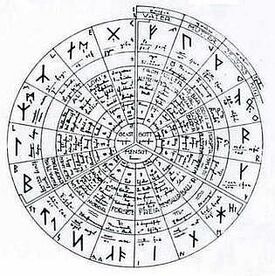Ariosophy
|
Ariosophy
Armanism and Ariosophy are esoteric ideological systems pioneered by Guido von List and Jörg Lanz von Liebenfels, respectively, in Austria between 1890 and 1930. The term 'Ariosophy,' meaning the wisdom of the Aryans, was first coined by Lanz von Liebenfels in 1915 and, in the 1920s, became the name of his doctrine. In research on the topic, such as Nicholas Goodrick-Clarke's book *The Occult Roots of Nazism*, the term 'Ariosophy' is generically used to describe the Aryan-esoteric theories of a subset of the 'Völkische Bewegung.' This broader application of the term is retrospective and was not commonly used among the esotericists themselves. List actually referred to his doctrine as 'Armanism,' while Lanz used the terms 'Theozoology' and 'Ario-Christianity' before World War I.
The ideas of von List and Lanz von Liebenfels were part of a broader occult revival that took place in Austria and Germany during the late 19th and early 20th centuries. This revival was loosely inspired by Christianity, historical Germanic paganism, holistic philosophy, as well as esoteric concepts influenced by German romanticism and Theosophy. The connection between this form of Germanic mysticism and historical Germanic culture is evident in the mystics' fascination with runes, particularly in the form of Guido von List's Armanen runes.
- Wikipedia article: Ariosophy
Chat rooms • What links here • Copyright info • Contact information • Category:Root
